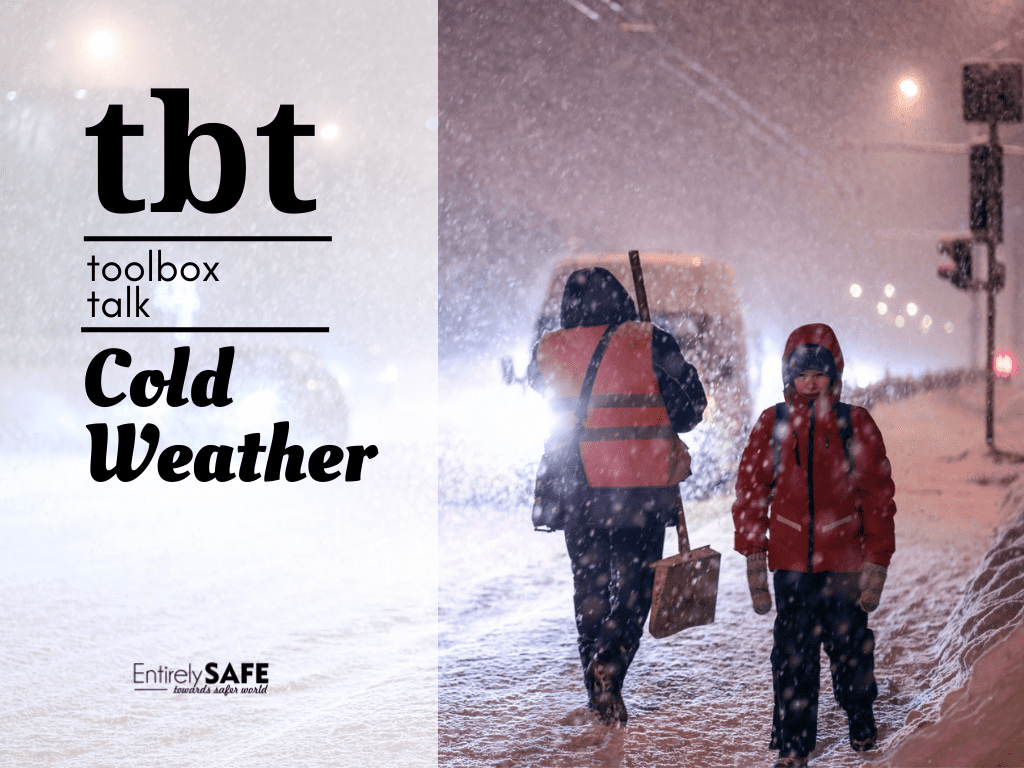Cold Weather Toolbox Talk

Before the Toolbox Talk
This safety talk is designed for discussion leaders to use in preparing safety meetings. Set a specific time and date for your safety meeting. Publicize your meeting so everyone involved will be sure to attend. Review this safety talk before the meeting and become familiar with its content.
Make notes about the points made in this talk that pertain to your workplace. You should be able to present the material in your own words and lead the discussion without reading it.
Seating space is not absolutely necessary, but arrangements should be made so that those attending can easily see and hear the presentation. Collect whatever materials and props you will need ahead of time. Try to use equipment in your workplace to demonstrate your points.
Give the safety talk in your own words. Use the printed talk merely as a guide. The purpose of a safety meeting is to initiate a discussion of safety problems and provide solutions to those problems. Encourage employees to discuss hazards or potential hazards they encounter on the job. Ask them to suggest ways to improve safety in their area. Don’t let the meeting turn into a gripe session about unrelated topics. As a discussion leader, it’s your job to make sure the topic is safe. Discussing other topics wastes time and can ruin the effectiveness of your safety meeting.

Toolbox Talk: Cold Weather
Being in freezing or cold temperatures for a long time can result in health problems such as trench foot, frostbite, and hypothermia. Danger signs include uncontrolled shivering, slurred speech, clumsiness, fatigue, and confusion.
Ron’s Story
Ron works in construction at a local site during the winter. One day he left his gloves and hat at home. As the day went on, he became so cold that he began to shiver. Soon he was having trouble holding his tools and doing his work.
Remember This
- Wear clothes meant for cold, wet, and windy conditions. Dress in loose-fitting layers to adapt to changing temperatures. Wear a hat, socks, shoes, gloves, and outerwear that will keep you dry.
- Work in pairs so that you and your co-worker can spot danger signs in each other.
- Drink plenty of warm, sweet beverages(sugar water, sports drinks) but avoid caffeine (in coffee, tea, sodas, or hot chocolate) and alcohol.
- Take breaks often, in a heated area, to warm up.
- Get medical help right away if you or another worker has symptoms of hypothermia:
- Shivering
- Fatigue
- Loss of coordination
- Confusion or disorientation.
- You are at higher risk if you take certain medications, are in poor physical condition, or suffer from illnesses such as diabetes, hypertension, or cardiovascular disease.
Interactive Discussion
- Have you or someone you know been injured or nearly injured while carrying out this activity? What happened?
- How can we stay safe today?
- What do we do at the worksite to prevent injuries related to this activity?
After the Toolbox Talk
At the end of the meeting, ask employees to sign a sheet on the back of this talk as a record that they attended the safety meeting. Keep this talk on file for your records.

